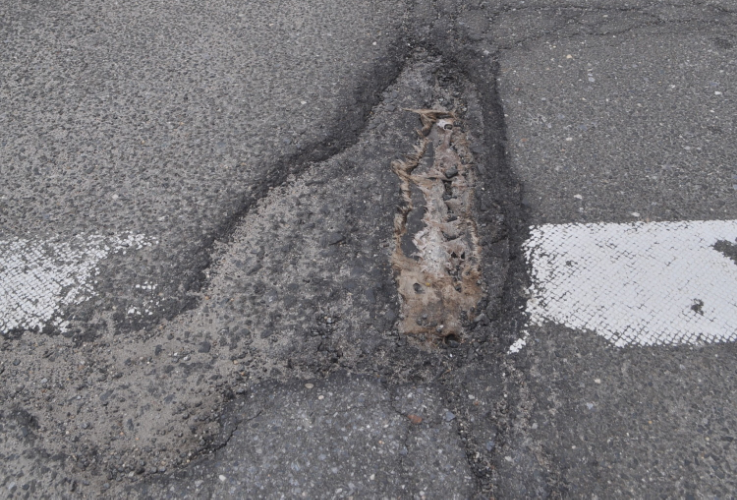Highway Crews Power Through Potholes
/One pothole at a time, highway crews are patching up the winter-battered roads of Huntington.
Superintendent of Highways Peter Gunther said Monday that already, crews have patched nearly 3,000 potholes. They’re filling fast, too – between Saturday and Monday, Gunther estimated they had filled about 800 potholes. Workers they’re going through 4-8 tons of asphalt a day per hot box; prime paving season winds up largely by June, and then it’s spot repairs from there, Gunther said.
Potholes aren’t the only problem crews face, he said. The other major headache is a phenomenon known as “road heaving.”
“What happens is that water gets in [the concrete],” he said. “It freezes, it thaws, and it lifts the whole area.”
The result is large portions of asphalt breaking apart in large chunks, Gunther said. The problem with road heaving, he added, is that it can’t be properly repaired if any frost remains in the ground, meaning some of the heaved roads can’t be fixed until several weeks of warm weather have passed.
The first two winters of Gunther’s administration, which took them helm after he was elected in November 2013 – have been marked by extreme winter weather, and the pothole burden has been fairly consistent. However, the road heaving has been a new headache.
“The biggest part is the heaving of the partial roads – that’s the biggest problem,” Gunther said.
Long-term repair plans are being mapped out – Gunther and highway engineer Bianca Drescher are leading the effort, which will begin with all general foreman being called in on March 23 for a general meeting. Using a matrix, they will survey the areas they oversee and catalog potholes, partial paving and full re-paving needs.
A week later, on March 30, construction coordinators will take the lists the foremen submitted and revise the lists following site visits. With that information, jobs are prioritized and long-term paving begins toward the end of April. Last year, Gunther estimated the town had filled 10,000-11,000 by mid-April.
In the meantime, residents using Huntington @ Your Service, the town-powered constituent feedback system, is a critical tool in tracking down short-term needs and addressing them, Gunther said.
“It’s instantaneous,” he said. “Someone reports it – it’s filled.”
While some potholes may fall on state or county roads, if they go unrepaired long enough, Gunther said he’ll send one of his crews to take care of it. He doesn’t mean to step on any toes, but when faced with weighing public safety against protocol, Gunther said he’d rather ask for forgiveness than permission.
“Look – they’re not going to yell at me for filing a pothole,” he said. “It’s a safety issue for the residents… whatever I can do to serve the residents.”
See This? Do This
How to report a pothole
The Huntington @ Your Service program is a handy way to report any array of problems one might face in Huntington Township, but as a winter’s worth of snow melts, its pothole reporting feature might be the most useful.
You’ll first have to visit huntingtonny.gov/at-your-service and create an account. Then, to report potholes:
ON YOUR COMPUTER
Visit huntingtonny.gov/at-your-service and click on the “highway” tab. Then, click the option to “report a pothole.” Follow the commands, which will pinpoint exactly where the problem is for town workers and determine how you’ll be alerted of progress on the pothole you reported.
ON YOUR SMARTPHONE
Visit huntingtonny.gov/at-your-service on your phone, then follow the link to either download the Huntington @ Your Service app for Android or iPhone. Users can enable location detection to make it even easier to precisely report pothole issues.







